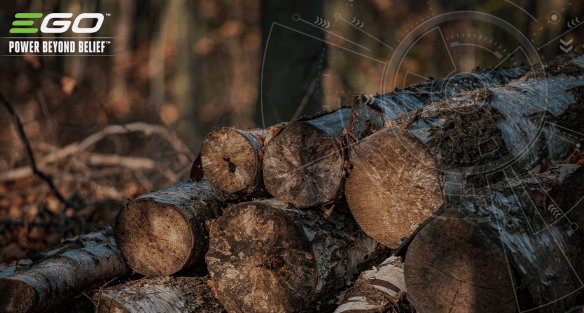After pruning back your garden trees, bushes and shrubs with an battery chainsaw over the winter, repurposing the pruned wood is something you may not give a second thought.
From making natural fertiliser to raised beds - we explore the number of reasons why you should put this otherwise wasted material to good use around the garden.
1. Pile it up
All sorts of wildlife from hedgehogs to insects that are beneficial to your garden love to use wood piles as a source of habitat. Simply piling it up in no particular fashion and leaving it in a disused area of the garden will be enough to encourage wildlife and beneficial insects to your plot.
A more organised approach would be to weave the branches and stems together and form a ‘dead hedge’. Not only will you have a habitat for insects and wildlife, but also a natural boundary to separate beds and other areas of your garden.
Remember, if some of the branches and stems are too long for your dead hedge, you can always cut them to size using a cordless chainsaw, such as the EGO CS1400E.
2. Turn it into a potassium rich fertiliser
Burning your pruned wood gives you a wood ash that is high in potash, a vital source of potassium. This is particularly practical if the wood is diseased and you don’t want it to spread throughout your garden.
It is best to burn the wood at the end of summer, when the wood has had time to dry from the previous winter and possibly early spring. Burning it at this time also means any hibernating animals will have migrated long since too.
The resulting potassium-rich ash is a great natural fertiliser for encouraging flowering, fruiting and disease resistance. Simply spread the ash around the base of plants, fruit bushes and trees to increase the yield and quality of flowers, fruits and vegetables.
Potash is alkaline so it is best to avoid spreading it around acid-loving plants such as:
- Blueberries
- Raspberries
- Rhododendrons
- Roses
3. Chip it
There are a variety of ways you can use pruned wood that has been chipped:
- Mix it into your compost heap to add some carbon rich material and to also add some structure
- Spread it around the base of plants to use as a mulch to suppress weeds. The mulch will also act as a slow release fertiliser
- Dig the wood chip into garden beds to improve soil conditions, as well as moisture retention
- Mound it up to make a wood chip pile that will break down to a carbon rich humus, teething with beneficial microorganisms and worms
4. Use it in raised beds
Use pruned wood in raised garden beds by placing it at the base and then burying it in organic matter, compost and top soil. The slowly decomposing wood provides a long-term source of nutrients for plants as well as drainage to aid ideal growing conditions.
Using pruned wood in this way also extends the growing season. The slowly decaying wood adds a boost of warmth to your garden beds as it is broken down by microorganisms that thrive in the environment.
What equipment do I need?
Just like when you operated your chainsaw for pruning tasks over the previous few months, we advise you wear protective gloves when carrying out any of the tasks above.
Looking for other ways to recycle waste for the benefit of your garden? Try repurposing any fallen leaves you have lingering around, or reuse the grass clippings from your first mow. Whatever you decide to do, checkout our range so you come prepared for the job.
